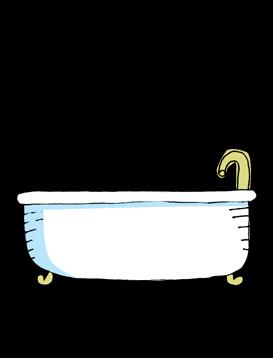
2 minute read
Water Footprint
Your Water Footprint
By: Jinal Kansara
Our most precious resource, water, is often taken for granted. We become obsessed in our ability to consume, without taking into consideration the long term repercussions. When it comes to water, most people are aware of the water crisis and the importance for the availability of clean, accessible, drinking water. Most people, however, do not consider just how much damage excessive water consumption can cause. Because there is no immediate effect, we do not see the side effects, and there-
fore we are more likely to ignore them. One hidden effect of excessive consumption is the need to build more dams. This causes devastation to the ecosystems that builders destroy in order to channel the water. It not only damages ecological health, but also creates more greenhouse gases that are responsible for global climate change. Not to mention, the price of building a dam is very high. Excessive water consumption also causes erosion, salinity and desertification. In Australia alone, salinity costs about 1.5 billion dollars a year. Finally, it also causes the degradation of rivers and wetlands. The Colorado River has become severely depleted with nearly 5 trillion gallons of water being drained every year from the river. So where is all this water going? You may be surprised to know that only 5% of your water footprint includes showers, dishwashers, washing machines, watering the yard, toilets, sinks, and other household water usage. The other 95% of your water footprint accounts for the food you eat, the products you buy, certain services and energy you use. Food production consumes a lot of water. Nearly 338 gallons of water are used to produce one serving, about 3 ounces, of beef with the average American eating 7 servings of beef each week. The production for poultry requires about 88 gallons per serving, about 3 ounces, with the average person eating 7 servings of poultry a week. Even a gallon of milk, 16 cups, requires 880 gallons of water to produce with the average American consuming a cup of milk per day. Also with energy production, water is used to produce fuels that allow us to keep our lifestyle. A gallon of gasoline requires almost 13 gallons of water to produce and nearly 670 gallons of water a day are needed just for electricity. No wonder there is a water crisis on our hands. While it is hard to eliminate our water consumption dramatically, we must remember that every drop counts. By taking simple steps such as remembering to close leaking faucets – which accounts for 10 gallons of water used per day – we can work out way to restoring our natural resources.
To calculate what your water footprint is follow the link: http://environment.nationalgeographic.com/environment/freshwater/change-the-course/waterfootprint-calculator/ For more facts and information about water conservation you can visit: http://environment.nationalgeographic.com/environment/freshwater/water-conservation-tips/ Also if you are interested in saving the Colorado River, make the pledge to help today: http://changethecourse.us To see how much water is hidden in our every day life check out: http://environment.nationalgeographic.com/environment/freshwater/embedded-water/

Resources: http://www.savewater.com.au/research-and-resources/ why-save-water/consumption http://environment.nationalgeographic.com/environment/ freshwater/change-the-course/water-footprint-calculator/ http://environment.nationalgeographic.com/environment/ freshwater/water-conservation-tips/ http://environment.nationalgeographic.com/environment/ freshwater/embedded-water/














